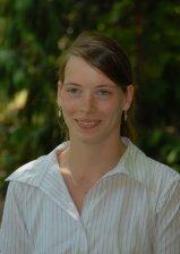Confining functional materials in protein cages
Promotion date: August 30.
Promotor: Prof.dr. Jeroen Cornelissen
Assistant promotor: Dr. Melissa Koay
| The design and engineering of biological building blocks that self-assemble into highly ordered, well-defined structures has been of growing interest for applications in nanotechnology. For applications in biomedicine and drug delivery, the design of biomolecular cargo carriers has largely focused on either lipid-based assemblies (vesicles and micelles) or protein-based assemblies (cage-like proteins and virus-based assemblies). Based on virus coat proteins, the term “virus-like particle” The aim of this thesis was to investigate and understand the interplay between the molecular template and the virus coat protein of Cowpea Chlorotic Mottle Virus (CCMV), in particular, how to control and direct the self-assembly of viruses. The central theme of this thesis was based on the template-directed self-assembly of viruses, with a particular emphasis on the topics in relation to viruses and functional cargo. The controlled assembly of highly monodisperse virus-like particles (using light-absorbing phthalocyanines and DNA-enzyme hybrids) was described. Template induced clustering of viruses (using a conjugated polyelectrolyte or a photo-responsive self-immolative polymer) was studied, as was the
|
Was your PhD work application driven, of more fundamental in nature?
Encapsulation of functional materials, like enzymes or organic compounds able to self-assemble into higher ordered structures, in protein cages, is a new topic. The encapsulation of enzymes in protein cages is recently discovered. This leads to new experiments involving the encapsulation of multiple enzymes in a single protein cage performing a multistep reaction.
This research involves lots of experiments and collaboration between universities. For example, I worked with colleagues in Madrid, Münster, Groningen, Eindhoven and also in Utrecht. This way of work and research fitted my personal interest. Travelling around worked out for my research very nicely and I enjoyed meeting colleagues from various expertise, like on photoelectronics, polymer science and molecular science.
Especially the enzymes project, in the later part of the PhD period, I liked very much. I created this project by myself and worked on it with a master student, Rindi M. Putri. The theory designed and the preliminary results look very promising. It seems like multistep reactions take place much more efficiently when encapsulated. Dr. Melissa Koay from our group is currently working on bacterial microcompartments, which are showing promising properties for encapsulation of enzymatic pathways and are more robust than our currently used protein compartments.
Did you publish some nice articles and present your work at conferences?
I published in the Journal of the American Chemical Society twice, and in Chemical Communications. In the first year of my PhD, I was a speaker in several national and international Conferences.
What are your future plans?
I am looking currently for jobs in Austria, which are related to research and development.
In my further career I find it important to still remain in contact with research, collaborating with teams and people from various fields. Also I would like to continue working with students. I would be glad finding a job with more applied research. A research job in a scientific center collaborating with industry and universities, or something similar, would suit me very well.
What, in your opinion, is important for Mesa+ to stay successful in future?
The general colloquium is very informative as it shows the kind of research people are involved in. As my part of research was quite new, it helped me to talk to colleagues and to find new ways of solving problems along the way.

